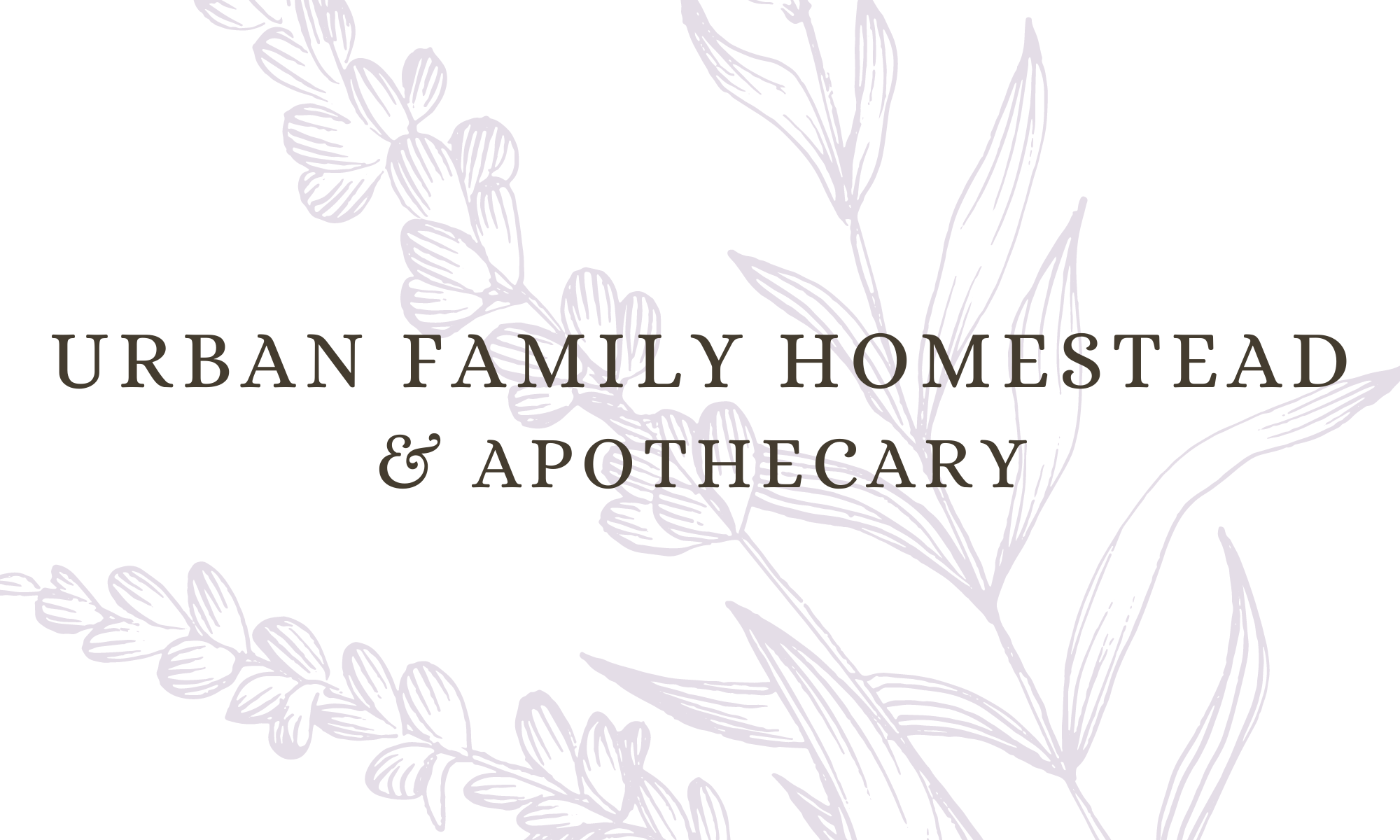This week in Urban Family Homestead and Apothecary Herb series, we will explore the soft and beautiful herb Mullein. She is a useful, fuzzy herb that will help you out in a pinch whenever you feel a cold coming on. This plant gives off beautiful flowers in the summer and tolerates most growing conditions. Some types even tolerate a light frost!

Mullein (Verbascum spp.) is a genus of flowering plants in the figwort family (Scrophulariaceae). It is native to Europe, Asia and Africa, and has been introduced to other regions. They are known for their tall pillars of yellow or white flowers and are often used in traditional medicine for their medicinal properties. The leaves and flowers of the plant are used to make teas, tinctures, extracts, and ointments.
Mullein Medicinal Uses
Mullein has been traditionally used for various medicinal purposes, such as respiratory issues, skin irritations, earaches, insomnia, and headaches. With respiratory issues, Mullein tea or tincture made from leaves and flowers is my favorite way to treat respiratory issues such as coughs, bronchitis, and asthma. Mullein can be used in ointments to soothe and heal skin irritations such as wounds, burns, and rashes, and is even helpful for the soothing of eczema. When my little ones have an earache, I use Mullein oil (usually infused with garlic oil) as a way to treat earaches. I simply warm a few drops and apply it to the affected ear.

Mullein tea can also be used as a natural remedy for insomnia, as it is believed to promote relaxation and sleep. Also due to its ability to relax and soothe, Mullein tea is used as a natural remedy for headaches, as it is believed to have a calming effect on the mind and body. As always, be sure to consult your naturopath before using mullein to double check for interactions with medicine you already take, and proper dosing for your specific body and needs.
How to Take Mullein
As mentioned above, a great way to take Mullein is through several different modalities including teas, extracts, tinctures, and oil infusions. Depending on your specific need will depend on what modality is best. Teas are best for respiratory issues such as coughs, colds, and chest viruses. Extracts are great for little ones who need a quick dose of mullein. Tinctures are often favored by adults and for medicine on the go as it lasts for several years and can be added to hot water for a quick tea. Oil infusions are my favorite for earaches. My favorite way to make an oil infusion is to place it in olive oil along with garlic and let it infuse over time. If you need it quicker, you can always use the double boiler method to quicker extract the plant material faster into the oil.

Growing Mullein
Mullein is a hardy and easy-to-grow plant that can be grown in a variety of conditions. You can find it growing best in zones 3-9. It loves to bloom in the summer time after a spring or fall planting. It particularly loves the full sun, but will do well also in partial shade as long as it is in well draining soil. Although Mullein is a drought tolerant herb, watering it regularly will promote the best growth. Fertilizing it once per month (my favorite is with worm castings solution) will keep it healthy.

If you want to promote a bushier plant, pinch back the tips of the plant to promote a lot more growth. You can harvest often from the Mullein plant. I like to cut leaves consistently through the season (while leaving 3/4 to 1/2 of the plant still) and dry the leaves in the sun for future tea and extract making. You can also harvest the flowers when the pillars start to grow for tea. While you can grow Mullein easily from seed, you can also propagate through divisions or cuttings.

Mullein can grow up to seven feet tall and get as wide as 30 inches. A lot of people like to grow them in a confined area of the yard or in large pots because they can be somewhat invasive in some areas. This plant is a biennial which means that this plant can take up to two years to reach it’s full maturity before dying. While this plant does grow in the wild, many gardeners love it for it’s extremely soft leaves, beautiful flowers, and useful medicinal properties.
Recipe
Garlic and Mullein Oil Infusion for Earaches
Ingredients:
4 TBSP chopped garlic (fresh is best, no seasonings if you buy pre-minced)
4 TBSP chopped mullein (dried or fresh is fine)
Olive Oil (you can use other oil such as avocado or coconut)
Mason
Glass jar with dropper
Directions:
Place a pot of water, filled 2-3 inches, on the stove and bring to a low rolling boil. While the water is starting to get hot, place the garlic and mullein in the mason jar. Fill the mason jar until you have covered the plant material plus 1-2″ (I prefer 2″). Bring the water to a low simmer and place the jar in the middle of the pot. Let simmer for about an hour and a half. You will notice that the oil will begin to darken.
Alternatively, you can do this in a slow cooker with the mason jar in a few inches of water and on the low setting for a few hours.
After the hour and a half is up, turn off the stove and let cool. Strain the plant material from the oil and keep the oil. Compost the plant material and you can add the oil to an amber bottle with a dropper. Store any remaining oil in a jar with a lid on tight. It can sit on the counter or storage shelf.
To Use:
Place a few drops in your ear and rub the neck in a circular motion, behind the ear. Repeat several times a day until symptoms improve.

